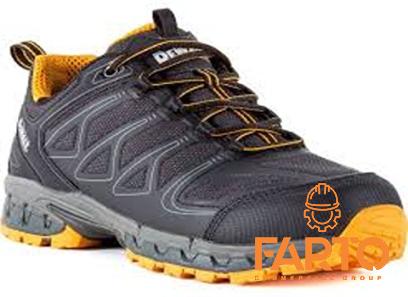The Importance of Workwear in the Modern Workplace Workwear plays a vital role in the modern workplace, providing a range of benefits to employers and employees alike. From creating a professional image to ensuring safety and comfort, workwear is an essential element of many industries. This article aims to explore the importance of workwear in the modern workplace by examining its role in fostering brand identity, ensuring safety and protection, promoting productivity, and enhancing employee morale. Brand Identity: In today’s competitive marketplace, brand identity has become increasingly important. Workwear plays a significant role in establishing and reinforcing a company’s brand image. Whether it is a logo, a specific color scheme, or a unique design, workwear helps create a visual identity that distinguishes a company from its competitors. When employees wear branded workwear, they act as walking advertisements, increasing brand visibility and recognition. This not only boosts brand awareness but also instills a sense of pride and belonging among the workforce, contributing to a positive corporate culture. Safety and Protection: Workplace safety is a top priority for employers in various industries, including construction, manufacturing, healthcare, and hospitality. Workwear is designed to provide protection against potential hazards, such as chemicals, flames, falling objects, or extreme weather conditions. Whether it is high-visibility clothing for road workers or flame-resistant gear for firefighters, workwear is specifically tailored to the needs of different professions. Aside from protecting employees from physical dangers, workwear also serves as a barrier against biological hazards. In sectors like healthcare, where employees are exposed to infectious diseases, proper workwear, including gloves, masks, and gowns, is crucial to prevent the spread of infections and maintain a sterile environment. Productivity and Efficiency: Workwear plays a crucial role in promoting productivity and efficiency among employees.ness environment.
safety ware
 By standardizing attire, workwear eliminates the need for employees to spend time and effort selecting appropriate clothing for work. This not only reduces decision fatigue but also ensures that employees are dressed appropriately for their specific role and industry. Moreover, workwear often includes functional features and pockets that enhance efficiency by providing easy access to essential tools and equipment. A construction worker, for example, might have multiple pockets in their work pants to carry tools, while a healthcare professional might have a lab coat with large pockets for storing medical supplies. By having all necessary items within reach, employees can focus on their tasks without unnecessary distractions. Employee Morale: Wearing workwear can have a positive impact on employee morale and job satisfaction. When employees wear branded workwear, they feel a sense of belonging and pride in being part of the company. This sense of affiliation fosters a positive work environment and enhances team spirit. Additionally, workwear gives employees a sense of professionalism and competence, reinforcing their identity as skilled professionals. This can boost confidence, job satisfaction, and employee engagement. When employees are proud to wear their workwear, they are more likely to project a positive image to customers, clients, and the public, leading to improved customer satisfaction and loyalty. Company Culture: Workwear also plays a significant role in shaping and maintaining a company’s culture. By establishing a dress code that reflects the values and expectations of the organization, workwear becomes a visual representation of the company’s culture and identity. For example, a company that values creativity and individuality may allow employees to express their personal style within a loose dress code, while a more formal and traditional company might require employees to adhere to a strict uniform. In both cases, workwear becomes a reflection of the company’s values and helps create a cohesive and unified workforce. Conclusion: Workwear is more than just clothing worn in the workplace; it is an essential component of the modern workplace. By promoting brand identity, ensuring safety and protection, promoting productivity and efficiency, and enhancing employee morale, workwear contributes to the success and well-being of both employers and employees. Understanding the importance of workwear can help organizations make informed decisions when it comes to selecting, implementing, and enforcing appropriate workwear policies in their respective industries.
By standardizing attire, workwear eliminates the need for employees to spend time and effort selecting appropriate clothing for work. This not only reduces decision fatigue but also ensures that employees are dressed appropriately for their specific role and industry. Moreover, workwear often includes functional features and pockets that enhance efficiency by providing easy access to essential tools and equipment. A construction worker, for example, might have multiple pockets in their work pants to carry tools, while a healthcare professional might have a lab coat with large pockets for storing medical supplies. By having all necessary items within reach, employees can focus on their tasks without unnecessary distractions. Employee Morale: Wearing workwear can have a positive impact on employee morale and job satisfaction. When employees wear branded workwear, they feel a sense of belonging and pride in being part of the company. This sense of affiliation fosters a positive work environment and enhances team spirit. Additionally, workwear gives employees a sense of professionalism and competence, reinforcing their identity as skilled professionals. This can boost confidence, job satisfaction, and employee engagement. When employees are proud to wear their workwear, they are more likely to project a positive image to customers, clients, and the public, leading to improved customer satisfaction and loyalty. Company Culture: Workwear also plays a significant role in shaping and maintaining a company’s culture. By establishing a dress code that reflects the values and expectations of the organization, workwear becomes a visual representation of the company’s culture and identity. For example, a company that values creativity and individuality may allow employees to express their personal style within a loose dress code, while a more formal and traditional company might require employees to adhere to a strict uniform. In both cases, workwear becomes a reflection of the company’s values and helps create a cohesive and unified workforce. Conclusion: Workwear is more than just clothing worn in the workplace; it is an essential component of the modern workplace. By promoting brand identity, ensuring safety and protection, promoting productivity and efficiency, and enhancing employee morale, workwear contributes to the success and well-being of both employers and employees. Understanding the importance of workwear can help organizations make informed decisions when it comes to selecting, implementing, and enforcing appropriate workwear policies in their respective industries.
Specifications of safety ware
 The Importance of Workwear in the Modern Workplace Introduction: In today’s fast-paced and competitive business world, every company needs to establish a strong brand identity, prioritize employee safety, promote productivity, and enhance employee morale. Workwear, also known as uniforms or corporate attire, plays a crucial role in achieving these objectives. From creating a professional image to ensuring safety and comfort, workwear has become an essential element of many industries. In this article, we will delve deeper into the importance of workwear in the modern workplace, examining its role in fostering brand identity, ensuring safety and protection, promoting productivity, enhancing employee morale, and ultimately contributing to business success. I. Brand Identity: 1. Visual Identity: Workwear plays a significant role in establishing and reinforcing a company’s visual identity. Employees wearing branded workwear act as walking advertisements, increasing brand visibility and recognition. A consistent and well-designed workwear collection creates a strong visual identity that sets a company apart from its competitors. This promotes brand awareness and helps build a positive brand reputation. 2. Professional Image: Workwear enhances the professional image of a company. When employees wear branded workwear, it communicates a sense of professionalism, competence, and reliability to clients, customers, and the public. This instills trust and confidence in the company’s services or products, contributing to customer satisfaction and long-term business relationships. II. Safety and Protection: 1. Hazard Protection: In industries where employees are exposed to potential hazards, workwear is designed to provide protection. For example, construction workers wear high-visibility clothing to ensure they are easily seen in hazardous work environments. Similarly, those working with chemicals or flames wear flame-resistant gear for added protection against accidents.
The Importance of Workwear in the Modern Workplace Introduction: In today’s fast-paced and competitive business world, every company needs to establish a strong brand identity, prioritize employee safety, promote productivity, and enhance employee morale. Workwear, also known as uniforms or corporate attire, plays a crucial role in achieving these objectives. From creating a professional image to ensuring safety and comfort, workwear has become an essential element of many industries. In this article, we will delve deeper into the importance of workwear in the modern workplace, examining its role in fostering brand identity, ensuring safety and protection, promoting productivity, enhancing employee morale, and ultimately contributing to business success. I. Brand Identity: 1. Visual Identity: Workwear plays a significant role in establishing and reinforcing a company’s visual identity. Employees wearing branded workwear act as walking advertisements, increasing brand visibility and recognition. A consistent and well-designed workwear collection creates a strong visual identity that sets a company apart from its competitors. This promotes brand awareness and helps build a positive brand reputation. 2. Professional Image: Workwear enhances the professional image of a company. When employees wear branded workwear, it communicates a sense of professionalism, competence, and reliability to clients, customers, and the public. This instills trust and confidence in the company’s services or products, contributing to customer satisfaction and long-term business relationships. II. Safety and Protection: 1. Hazard Protection: In industries where employees are exposed to potential hazards, workwear is designed to provide protection. For example, construction workers wear high-visibility clothing to ensure they are easily seen in hazardous work environments. Similarly, those working with chemicals or flames wear flame-resistant gear for added protection against accidents.
buy safety ware
 By providing appropriate workwear, employers can significantly reduce the risk of workplace injuries and ensure the well-being of their workforce. 2. Health Protection: In sectors such as healthcare, proper workwear is essential in preventing the spread of infections and maintaining a sterile environment. Healthcare professionals wear gloves, gowns, masks, and other protective gear to protect both themselves and patients from potential biological hazards. Workwear acts as a barrier against pathogens, minimizing the risk of cross-contamination and ensuring a safe working environment for everyone. III. Productivity and Efficiency: 1. Standardization: Workwear plays a crucial role in promoting productivity and efficiency by standardizing attire. When employees wear a specific uniform, it eliminates the need for them to spend time and effort selecting appropriate clothing for work. This reduces decision fatigue and allows employees to focus their energy on their tasks at hand, leading to improved productivity and time management. 2. Functional Features: Workwear often includes functional features tailored to specific job requirements. For instance, construction workers might have multiple pockets in their work pants for carrying tools, while healthcare professionals may have lab coats with large pockets for storing medical supplies. These functional features improve efficiency by providing easy access to essential tools and equipment, minimizing downtime and eliminating unnecessary distractions. IV. Employee Morale: 1. Sense of Belonging: Wearing branded workwear nurtures a sense of belonging among employees. It establishes a sense of pride and affiliation with the company. When employees identify themselves as part of a team through workwear, they are more likely to feel motivated, engaged, and loyal to the organization. This sense of belonging fosters a positive work environment and enhances team cohesion. 2. Professionalism and Confidence: Workwear not only gives employees a sense of professionalism but also boosts their confidence. When employees wear workwear that represents their role and industry, it reinforces their identity as skilled professionals, instilling a sense of pride in their work. The feeling of being part of a professional team can elevate employee morale and job satisfaction, leading to higher levels of productivity and performance.
By providing appropriate workwear, employers can significantly reduce the risk of workplace injuries and ensure the well-being of their workforce. 2. Health Protection: In sectors such as healthcare, proper workwear is essential in preventing the spread of infections and maintaining a sterile environment. Healthcare professionals wear gloves, gowns, masks, and other protective gear to protect both themselves and patients from potential biological hazards. Workwear acts as a barrier against pathogens, minimizing the risk of cross-contamination and ensuring a safe working environment for everyone. III. Productivity and Efficiency: 1. Standardization: Workwear plays a crucial role in promoting productivity and efficiency by standardizing attire. When employees wear a specific uniform, it eliminates the need for them to spend time and effort selecting appropriate clothing for work. This reduces decision fatigue and allows employees to focus their energy on their tasks at hand, leading to improved productivity and time management. 2. Functional Features: Workwear often includes functional features tailored to specific job requirements. For instance, construction workers might have multiple pockets in their work pants for carrying tools, while healthcare professionals may have lab coats with large pockets for storing medical supplies. These functional features improve efficiency by providing easy access to essential tools and equipment, minimizing downtime and eliminating unnecessary distractions. IV. Employee Morale: 1. Sense of Belonging: Wearing branded workwear nurtures a sense of belonging among employees. It establishes a sense of pride and affiliation with the company. When employees identify themselves as part of a team through workwear, they are more likely to feel motivated, engaged, and loyal to the organization. This sense of belonging fosters a positive work environment and enhances team cohesion. 2. Professionalism and Confidence: Workwear not only gives employees a sense of professionalism but also boosts their confidence. When employees wear workwear that represents their role and industry, it reinforces their identity as skilled professionals, instilling a sense of pride in their work. The feeling of being part of a professional team can elevate employee morale and job satisfaction, leading to higher levels of productivity and performance.
safety ware + buy and sell
 V. Company Culture: 1. Visual Representation: Workwear serves as a visual representation of a company’s culture and values. By establishing a dress code that aligns with the company’s values, workwear becomes an embodiment of the organization’s identity. For example, a company that values creativity and individuality may allow employees to express their personal style within a loosely defined dress code, while a more formal corporate environment may enforce a strict uniform. Workwear acts as a tangible way of showcasing the company’s culture to employees, customers, and stakeholders. 2. Coherence and Unity: By implementing a consistent workwear policy, companies can create a cohesive and unified workforce. When employees dress in a similar manner, it creates a sense of unity and teamwork. Workwear fosters a shared identity, helping employees feel like an integral part of the organization and promoting a positive and collaborative corporate culture. Conclusion: Workwear plays a crucial role in the modern workplace, offering a range of benefits to both employers and employees. From establishing a strong brand identity to ensuring safety and protection, promoting productivity, enhancing employee morale, and shaping company culture – workwear contributes to the success and well-being of organizations across various industries. By recognizing the importance of workwear, companies can make informed decisions when it comes to selecting and implementing appropriate workwear policies, ultimately contributing to a thriving and successful business environment.
V. Company Culture: 1. Visual Representation: Workwear serves as a visual representation of a company’s culture and values. By establishing a dress code that aligns with the company’s values, workwear becomes an embodiment of the organization’s identity. For example, a company that values creativity and individuality may allow employees to express their personal style within a loosely defined dress code, while a more formal corporate environment may enforce a strict uniform. Workwear acts as a tangible way of showcasing the company’s culture to employees, customers, and stakeholders. 2. Coherence and Unity: By implementing a consistent workwear policy, companies can create a cohesive and unified workforce. When employees dress in a similar manner, it creates a sense of unity and teamwork. Workwear fosters a shared identity, helping employees feel like an integral part of the organization and promoting a positive and collaborative corporate culture. Conclusion: Workwear plays a crucial role in the modern workplace, offering a range of benefits to both employers and employees. From establishing a strong brand identity to ensuring safety and protection, promoting productivity, enhancing employee morale, and shaping company culture – workwear contributes to the success and well-being of organizations across various industries. By recognizing the importance of workwear, companies can make informed decisions when it comes to selecting and implementing appropriate workwear policies, ultimately contributing to a thriving and successful business environment.











Your comment submitted.